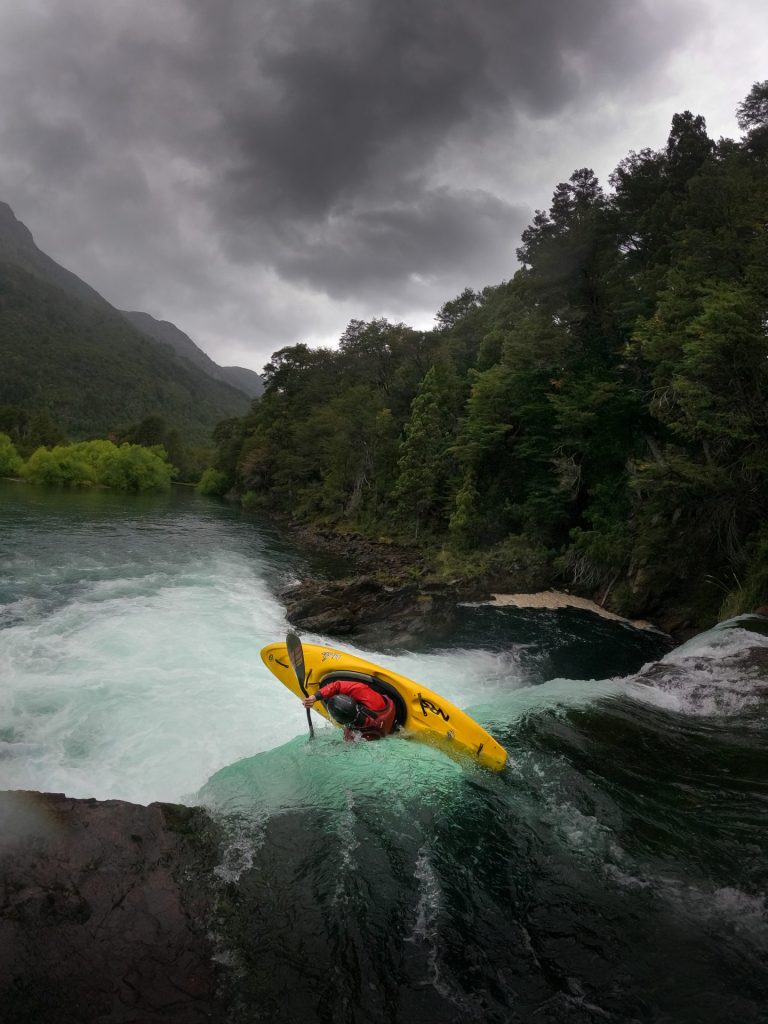Mission Thuli Bheri River, Nepal
Photography: Lucas Quintero and Marine Coursac
Nepal is one of those places in the world of kayaking that you will finish your trip with equal amount of epic memories and stories on and off the river. To this day, almost a year after my trip there in 2022, I’m still unsure why this is but it probably has something to do with the incredibly kind people that live there, the loose logistics operations to get to and from the river, the raw nature or the consistent amount of good quality whitewater. The truth is, if I have the chance to go back to Nepal I wouldn’t hesitate it for a second. Even though I managed to achieve everything I had planned for my one month stay there, there is still a lot of whitewater for me to discover.
The Thuli Bheri river was the first of our missions there. And it was quite an epic one. In Nepal you have two ways of approaching the put in point of a river: you can rent a truck and driver to take you from A to B, or you can choose the cheaper option of public buses, taxis, tuc tuc’s, tractors or any other transportation that can carry kayaks and people. This way of approaching will take you from A to “V”, stopping in every letter in between before you reach the place you wanted to reach, substantially increasing the “figure shit out on the go” factor on your trip, which was fine with our crew so we went for it.
We started in the touristic town of Pokhara taking a 10 hour overnight bus to a random town where we immediately connected with another 12 hour bus that took us and the chickens and goats onboard to the last ‘big’ city on the way called Musikot. Hot tip for anyone travelling to Nepal soon, make sure you have headphones or earplugs with you because drivers like blasting Nepali music the whole trip regardless of the time of the day, or night. From here the road got rougher as it started climbing up the valley following the river, buses were no longer an option so we opted for local taxis. For two days we took 4 different taxis, each and every one of them taking us up closer to the put in town of Dunai, swapping vehicles every time the road crossed the river. Even though the progress was slow, it was constant. There was only one time we all though that this approach wasn’t the right one and that we should have flown in, and that’s when we snapped the steering axle in one of the taxis in the middle of nowhere. Just before we could stop laughing about our situation and actually think of something, our really handy drivers somehow fixed the broken part and after a few minutes we were back on track driving up again in one of the toughest roads I’ve been. After three and a half days we finally made it to the put in of our first river in Nepal.
Next morning I somehow managed to get two bars of phone service and got surprised by some texts from Rajiv and Anup (our local logistics heroes) telling us that they managed to get a hold of a plane to charter to fly to the Humla Karnali, which was going to be our next mission. The situation was that due to presidential elections that week, there was only one day to fly in which was in 6 days time. With 4/5 days of unknown river ahead of us still, we figured it was a tight plan but do-able so we agreed to commit to do it but not before borrowing a substantial amount of money from Rajiv and Anup to pay for the plane, as the airline was asking for a pay in full ahead.
Once all that logistic hustle was over, I was finally able to turn my phone off and enjoy one of the most joyful 4.5 days of kayaking that I’ve ever had up in the Himalayas. Some of the most class whitewater in the world with very little portaging. On the night of our last camp, with only 50km of flat water ahead of us until the take out, my phone once again started ringing with lots of messages from Rajiv asking where we were, telling us that all the crews passports should be in Kathmandu by the next day so he could sort out the permits to fly into the Humla, and because of the elections, all government offices countrywide were closing ahead of time, which didn’t help us at all. So the next day’s game plan was to wake up at 5am and tackle that flat water as fast as possible. It took us around 5 hours to do it. Once at the take out we managed to grab a straight minibus to Nepalgunj, the closest big city. It was a 17-seater bus, we counted at one point 32 people, lots of them getting carsick on the swingy roads. I’m not a picky traveller, but that was one of the worst experiences of my life, all 7 hours of it.
When we made it to the city we were greeted by ones of Rajivs man with a bunch of TucTucs ready to take us to our hotel, and immediately after we handed all our passports to this man (unknown for us) so he could fly them to Kathmandu and would be ready to process the permits the next morning. While resting at our hotel, we wire transferred all the money we borrowed for the flight, trying to convince our banks this wasn’t a scam and we were doing it willingly when they were asking us security questions about expiry dates of our passports and some of us didn’t know as we gave them away to a random dude on the street a couple days back. Luckily after some back and forth, we were on the clear and all money transferred. We found out way later on that this kind of permits we were after normally take a whole week to get processed and we were trying to get them in one morning before presidential elections. Right here is where Rajiv and Anup became our heroes. Within two days we had all our passports back with us, with permits, ready to fly into our next adventure. The Humla Karnali.

